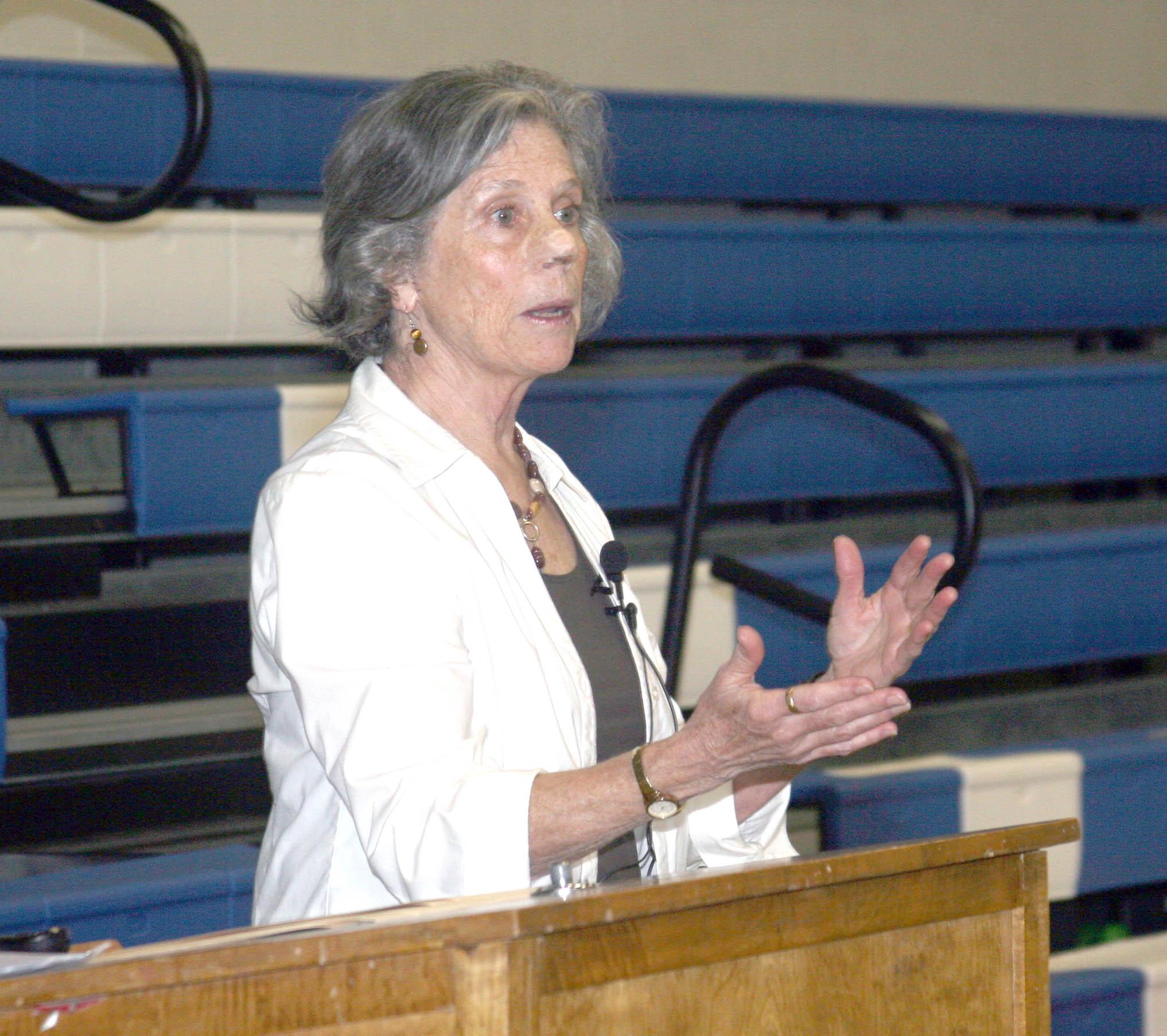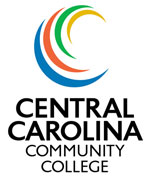College News
Author, archaeologist Char Solomon visits CCCC
Notice: This article is older than 12 months. Names, contact information, programs, titles, etc. might have changed. If you have any problems please call the main college number, 1-800-682-8353, and we will be happy to direct you accordingly.

click image to enlarge ⊗
Char Solomon discuss her personal encounter with the ancient culture of the Maya civilization during ... (more)
11.14.2016 • College & Community • College General
SANFORD - Despite its long list of accomplishments dating back thousands of years, the Maya civilization probably hasn't been on the radar long for many students walking into the Central Carolina Community College gym on Oct. 31 to hear author and archaeologist Char Solomon discuss her personal encounter with the ancient culture.
But by the time the hour-long lecture concluded, most were intrigued. And at least one had discovered an unexpected, personal connection with the speaker and her topic.
"Introduction to the Maya" was part of a series that brings notable speakers to CCCC's Lee Main Campus to help university transfer students explore new ideas and enrich their classroom experience.
Solomon has researched and lectured on the Maya extensively. She worked as an archaeological field assistant in Mexico and Guatemala during the 1970s and is author of "Tatiana Proskouriakoff, Interpreting the Ancient Maya," a biography about one of the world's leading scholars of the Maya civilization.
At the height of their influence, the Maya lived in a region extending from southern Mexico southward through modern-day Belize, Guatemala, El Salvador, and Honduras. As Solomon projected images of ancient sites and artifacts throughout the region, she described some of the culture's major achievements.
Among them: hieroglyphics, an early writing system that has been decoded over the last couple of generations by scientists, revealing new insights about the civilization. Also, some ambitious architecture, even full-scale cities that were rendered by Proskouriakoff in illustrations using archaeological research.
Solomon says Maya pyramids capture everyone's imagination. Tourists still flock to famous ancient sites like Copan in Honduras and Tikal in Guatemala to admire the ruins -- tall, stone structures covered with what looks like rows of narrow steps rising from the ground toward the sky.
One at Copan was built with what Solomon described as a "hieroglyphic staircase," an ascending path constructed from individual stones, each one carved with glyphs. As archaeologists reassembled the structure like a jigsaw puzzle, they were able to read information carved into the pyramid -- a record of Maya kings and their accomplishments.
Solomon described how another excavation at Palenque, in southern Mexico, managed to unearth the burial chamber of Pakal, one well-known Maya who ruled in the first century.
As she wrapped up her presentation and took questions, Solomon mentioned some broader themes she hoped students would take away from the lecture: a general sense of Maya history, some notable accomplishments of the ancient culture and what she called "the process of discovery."
Then, she noted that some in the audience might even have descended from the Maya.
That brought an enthusiastic reaction from Zorayma Estrada, a Lee Early College junior taking classes at CCCC, who nearly leapt from her front-row seat. When she arrived for the lecture, Estrada knew she might hear something about her native Mexico. But she didn't expect to hear Solomon discuss Chiapas, the region where she was born and raised.
"When she talked about dialects, I thought that was interesting," Estrada said about Solomon's discussion of Mayan language. "My dad actually still has his fluent dialect."
Bianka Stumpf, CCCC's social sciences lead instructor who organized the lecture, said these cultural enrichment events are important for students to connect studies to their own experience and understand how knowledge from one academic discipline relates to others.
After Solomon answered questions about contemporary Mayan language, her life as an archaeologist, and the environmental impact of archaeological digs, Stumpf reminded students that many of them came in expecting a history presentation. But what they got was much more.
"It reminds us in a university transfer program how our very seemingly different disciplines really do intersect," Stumpf said. "And that's where the material is so rich."
Solomon's appearance was made possible by funding from the North Carolina Humanities Council, a statewide nonprofit and affiliate of the National Endowment of the Humanities. It also was part of CCCC's celebration of National Hispanic Heritage Month.
For more information on Central Carolina Community College, visit the website www.cccc.edu.
Categories
- Admin, Faculty & Staff Category
- Arts & Entertainment Category
- Clubs Category
- College & Community Category
- College General Category
- Continuing Education Category
- Curriculum Programs Category
- Distance Education Programs Category
- Facilities/Buildings Category
- Finances Category
- Foundation Category
- Graduations Category
- Lee Early College Category
- NCCCS Category
- SGA Category
- Special Events Category
- Sports Category
- Students/Graduates Category
- Uncategorized Category
Archives

